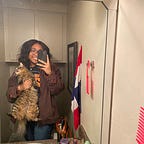A New Way of Teaching: Anime is Educational Gold
Anime has several characteristics that could expose students to unconventional teaching methods that can yield better results in the long run.
Most students have heard of the legendary “Kamehameha” often followed by cupped hands, a thrust forward, and a beam of powerful energy. If not, students have been exposed to the world of anime in some form or another, whether it is a brief passing on Netflix, a classmate’s shirt, or through pop culture.
Anime is a Japanese animation style that has made its way into American culture for entertainment, but its purpose can extend far beyond. It has the power to educate young people and should be implemented in schools around the world.
Anime has several characteristics that could expose students to unconventional teaching methods that can yield better results in the long run. Over the past decade, teaching has made a drastic turn. In more traditional methodology, which can accurately be described as a “teacher-dominated interaction,” teachers were the source of knowledge, while “learners serve[d] as passive receivers.”
In theory, this can be seen as a good thing since teachers have all the information. However, learning should not solely be the responsibility of the teacher.
A more modern take for the teaching experience is often described as “student-centered.” In this setting, teachers yield material to fit students’ needs. Students are more active in consuming the material and encouraged to remain engaged. That combined with technological advances, such as the internet, Zoom, and Canvas, the limit to how and what to teach seems infinite.
Anime could be a part of the infinite ways to connect students with certain subjects in school. Using fiction to teach is similar to people who often tell folktales to connect and teach children lessons. For instance, instead of explaining a certain concept or theme, folktales were used to entertain children while also providing them with valuable lessons.
Analyzing and studying different storytelling forms is essential to learning diverse ways to connect to different audiences and compare them to other literary forms. Anime can absolutely be a part of that process, significantly because learning from other cultures, like Japanese, can help build a diverse way of thinking.
The introduction of bringing other cultures into the classroom can make students more creative and innovative. According to European Affairs, “art and culture have the ability to stimulate people’s imagination and creativity in schools, in colleges and universities and in lifelong learning.”
Anime is the integration of Japanese art and culture. It can encourage creative thinking that can be used for other core curricula. The stimulation of creativity is what promotes critical thinking that could help students even when they leave school.
More aligned with the core curriculum, some amine shows are specifically for learning and obtaining knowledge of certain subjects. For instance, an anime entitled “Cells at Work” is focused on the human body and the different anthropomorphic cells that keep the body healthy and safe against germs and bacteria. Each function and cell is personified in an entertaining way to learn about the immune system.
This idea has made its way to a seventh-grade classroom where a teacher used anime to weave together history, language arts, ecological sustainability, and visual arts. It not only provided knowledge of Japanese culture but also served as a way to connect back to English themes and ideas used to enhance learning. This type of learning is rare and should be used more often in middle school and undergraduate programs.
Students who prefer the traditional way of teaching may disagree. However, the way of teaching must be adjusted to adapt to new generations with different interests and mindsets. Anime is a great way to connect with students in the classroom.
Subscribe to Insights from Educate for a midweek dose of professional learning and inspiration with the latest news and research from education.
